- Mexico’s Lacandon Jungle has been whittled away as farmers clear land for cattle and crops.
- Sources say palm oil expansion in the region is exacerbating the threat. In 2017, the Secretariat for the Countryside of Chiapas estimated that there were around 64,000 hectares of oil palm planted in the state (approximately 158,000 acres), with a goal of 100,000 hectares (approximately 247,000 acres).
- While the Chiapas state government maintains oil palm plantations may only be grown on degraded land, farmers and researchers say this is not always the case.
- The processed oil is sold both domestically and exported to other countries where it’s used in the manufacture of food, cosmetics, biofuel and a host of other products.
In the small community of Boca de Chajul just over the Guatemalan border in the Mexican state of Chiapas, Rafael Lombera recounts how he has seen large expanses of Lacandon Jungle disappear. He says that in the past, deforestation was driven primarily by ranching and the exploitation of natural resources. But now there’s another industry whose impacts are growing: palm oil.
Stretching from southern Mexico into Guatemala and Belize, the Lacandon Jungle is the largest area of tropical rainforest in Mesoamerica. However, it’s but a remnant of its former self. Between 1970 and 1990 it shrank more than 30% as its land was razed for agriculture, and it continues to be whittled away bit by bit as ranches, farms, and plantations expand.
Montes Azules Biosphere Reserve protects the largest surviving tract of Lacandon Jungle in Chiapas. But right across the Lacantun River at its southern extent sits Boca de Chajul – and the agricultural morass that surrounds it.
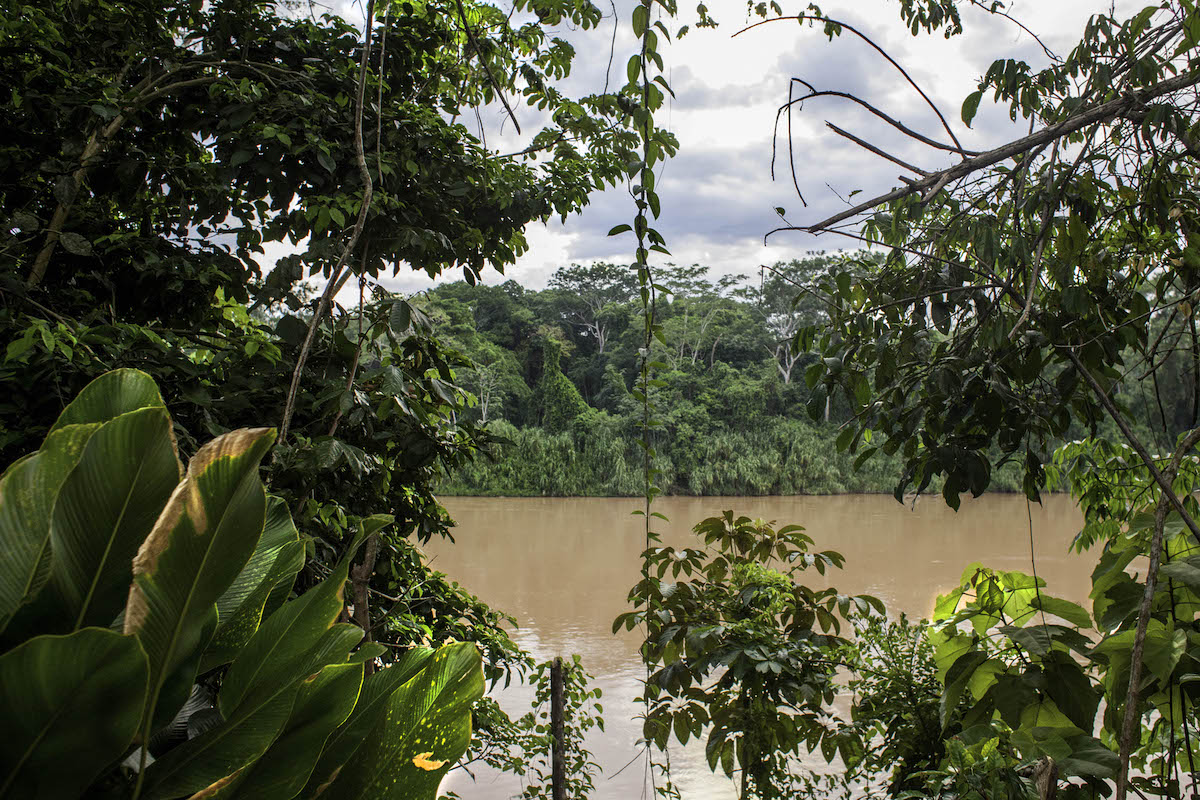
According to a study by Mexico’s National Institute of Ecology, the municipality of Marqués de Comillas, which includes Boca de Chajul, contains another vanishing asset: the only remaining flooded forest left in the country. Rafael Lombera’s huts are elevated on large wooden supports, which allow the waters of the Lacantun River to pass underneath when it floods. This corner of the jungle is the gateway to Montes Azules Biosphere Reserve; it is also the region where oil palm cultivation began in Mexico in the mid-20th century.
According to the Bank of Mexico, the country imports around 462,000 metric tons of palm oil annually, which constitutes around 82% of what it consumes. The rest – some 101,400 metric tons – comes from domestic production.
The southeastern portion of the country has the largest share of land suitable for oil palm cultivation – some 2 million hectares (over 4.9 million acres), as determined by Mexico’s federal government. Chiapas is located in this region, and the government says it has the land capacity to grow up to 400 thousand hectares (over 988 thousand acres) of oil palm trees. The processed oil is sold both domestically and exported to other countries where it’s used in the manufacture of food, cosmetics, biofuel and a host of other products.
A changing landscape
According to Chiapas state officials, palm oil production is only happening on degraded land that had previously been deforested. However, local sources say this is not always the case.
Rafael Lombera grew up in Marqués de Comillas and has lived there for more than four decades. He says that in that time, things have changed.
“The jungle is being cut down to plant oil palm,” Lombera said.
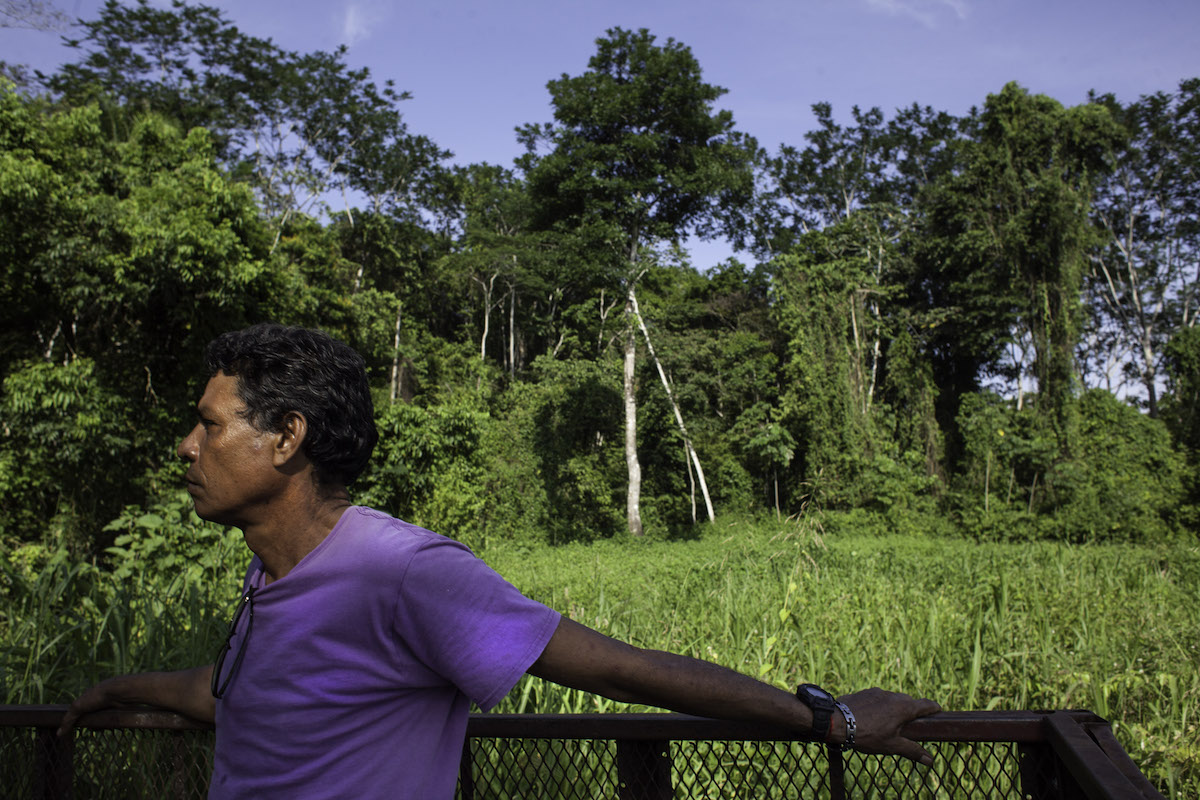
Oil palm grower José Baldovinos came to Boca de Chajul from Mexico’s Michoacan region in 1972 and agrees that things are different now. “It was only jungle here, but it has been changing drastically,” he said.
Baldovinos said to get around regulations, farmers would quietly log areas of forest, wait a few years, then enroll the land in financing programs for oil palm cultivation on degraded land.
In 2013, the Agri-food and Fisheries Information Service (SIAP) calculated that 44% of the oil palm in Chiapas was planted in jungle areas.
A source who works in the Chiapas government who requested anonymity told Mongabay that currently the main cause of deforestation is logging by “illegal companies” that work by night.
In 2017, the Secretariat for the Countryside of Chiapas estimated that there were around 64,000 hectares of oil palm planted in the state (approximately 158,000 acres), with a goal of 100,000 hectares (approximately 247,000 acres). To reach this target, the government of Chiapas pushed for the creation of four oil palm nurseries that are the largest in Latin America, according to the Institute for the Development of Tropical Agriculture.

León Enrique Ávila, a professor and palm oil researcher at the Intercultural University of Chiapas, said oil palm planting in Chiapas does not include effective management of the environment. He told Mongabay that the sensation of being in an oil palm planation is like that of being in a “silent desert where there is no noise at dawn.”
Ávila said he has explored the region for years and observed that oil palm has affected plant, animal, and community dynamics. He said the people who once lived off their harvests and what the jungle offered them now anxiously await the day that factory owners pay the palm growers, who in turn pay their laborers.
Antonio Castellanos, a researcher at the Center for Multidisciplinary Research on Chiapas and the South Border and who has worked with oil palm growers operating on tenant farms for six years, said that one of the conditions for receiving support from the Mexican government “is to commit to planting it only as a monocrop.” This means that planting other crops with oil palm is not allowed. Research shows that growing oil palm as a monocrop can be a hurdle for small farmers who often need other sources of sustenance and income while they wait the half-decade it takes for their palms to mature and produce fruit.
Oil palm cultivation has been linked to other destructive impacts, as well. Deforestation for oil palm plantations releases CO2 into the atmosphere, and the pesticides, herbicides and fertilizer used to grow them can pollute surrounding water sources.
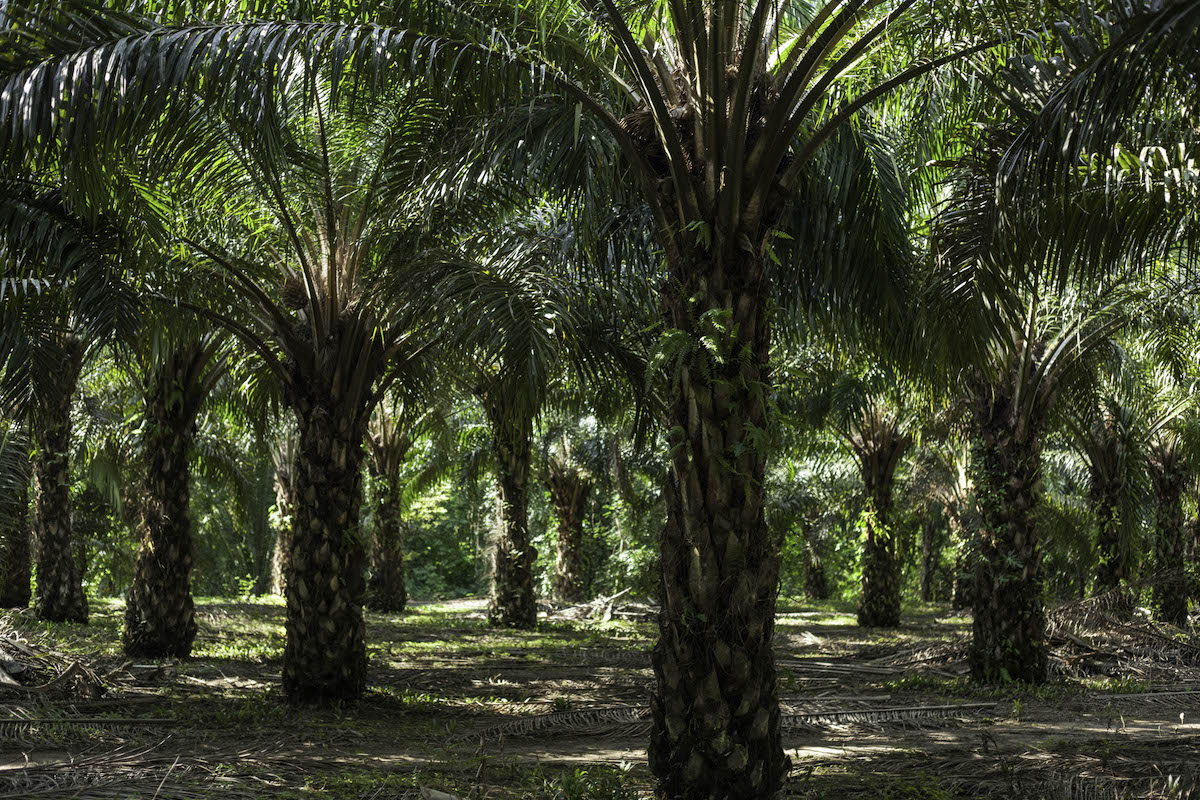
Bárbara Linares Bravo, a researcher at the College of the Southern Border (ECOSUR) who studies oil palm production in northern Chiapas, says she has seen a sharp shift from small farms to large plantations as oil palm cultivation expands.
“In contrast with the sustainable development rhetoric that [is often used to] justify it, expanding oil palm paradoxically increases social and environmental contradictions,” Linares Bravo said.
A lucrative crop
Local sources say palm oil offers farmers an opportunity to escape poverty – if they’re able to wait out the years it takes for the trees to mature. Baldovinos said growing corn nets 5,000 pesos ($277) per month while oil palm growers can make nearly 35,000 pesos ($1,862) per month. Meanwhile, a government-subsidized program aimed at encouraging landowners to preserve forest pays around 300 pesos ($12) per hectare per year.
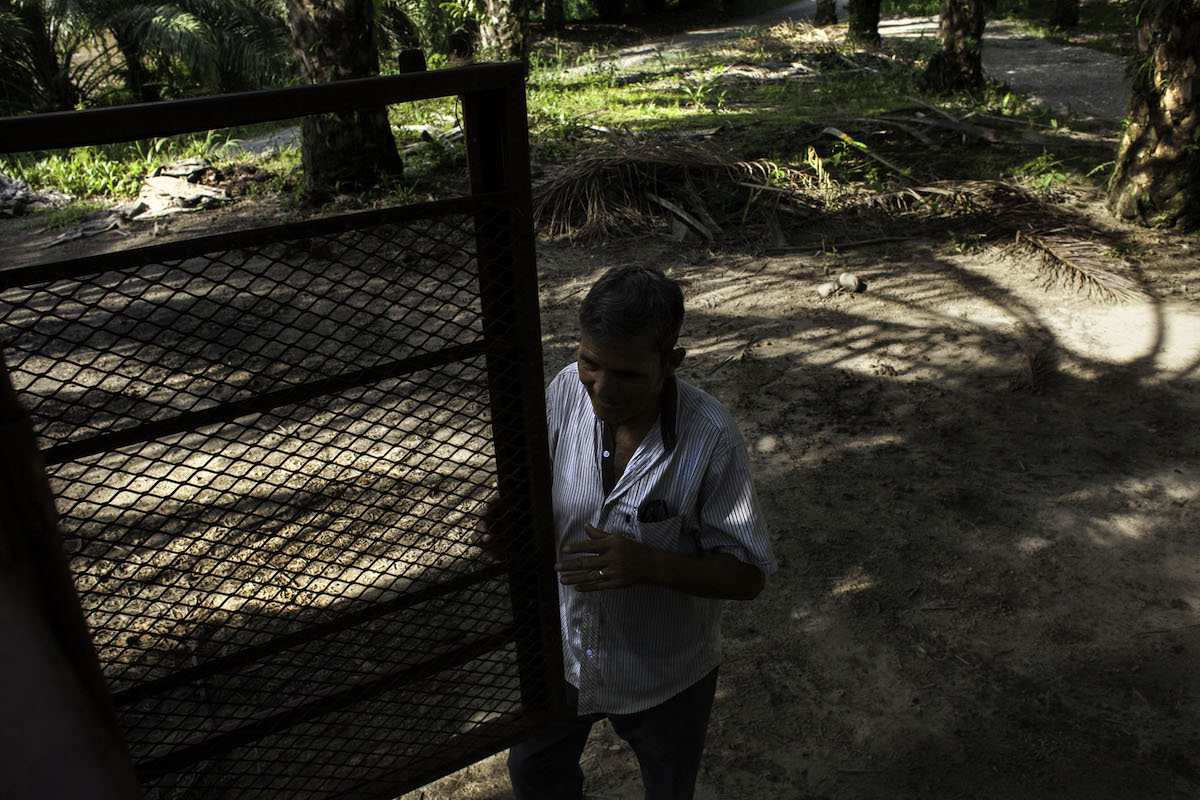
Today, Baldovinos grows oil palm on 27 hectares (about 66 acres) around Boca de Chajul and is planning to add another six hectares (about 15 acres). He says has he achieved economic stability only recently, earning 30,000 pesos per month off his oil palm crops. For most of his life as a farmer – around 65 years – he barely scraped by growing other crops like beans, corn, and peppers.
He said oil palm has also allowed him to cope with medical costs when two relatives became seriously ill.
“People are becoming desperate and are cutting down the jungle to plant palm,” said Rafael Lombera, a tenant farmer, as he played a game of lotería in his hands. On the cards are pictures of animals and plants, many of which once lived in the forest that has been converted to farmland. “The future is palm.”
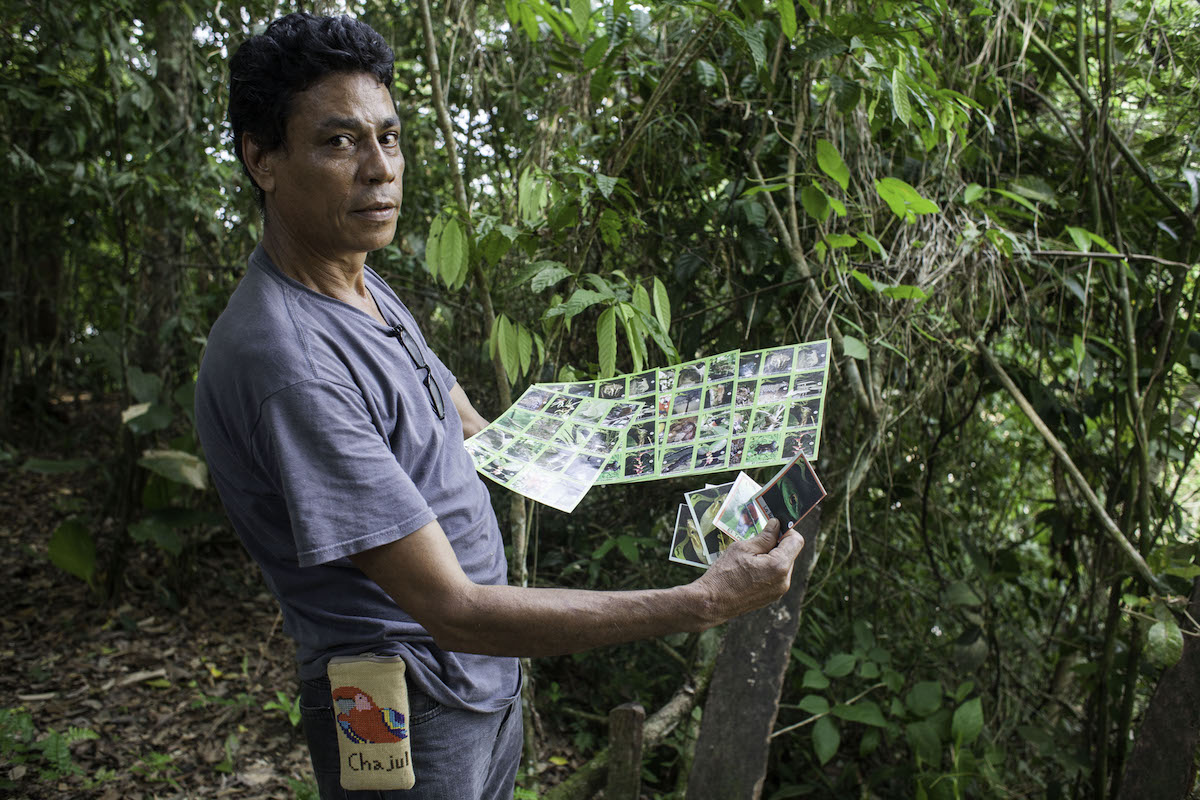
This is a translated and adapted version of a story that was first published in Spanish on February 13, 2020.
Banner image by Moysés Zúñiga Santiago.
Feedback: Use this form to send a message to the editor of this post. If you want to post a public comment, you can do that at the bottom of the page.
